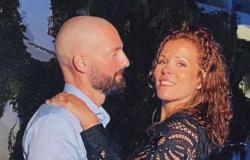“Gabriel Avelot was born on May 26, 1834 in Saint-Germain-en-Laye, to a tailor father and a gardener mother. Living in Paris, he was a locksmith and knew how to read and write well.
However, I think the family is poor and he steals out of necessity. In 1859 and 1861, he was sentenced to one year and then six months in prison. That same year, he broke into a residential house. The theft too many for which the Assize Court sitting in Versailles sentenced him on May 5, 1862 to eight years of forced labor. “
Jean-Baptiste, like his father Gabriel, worked as a mechanic. He worked on locomotives, on the Païta-Nouméa line then on the phosphate mines in the New Hebrides and on File de Makatéa, in Tahiti, where he died of an accident. Photo DR
Émile Avelot holds his binders in front of him, one for each convict in the family, where transcriptions of official documents attempt to retrace a life that remained secret for nearly 140 years.
“Gabriel was first sent to the penal colony of Toulon where he arrived on September 12, 1862. At that time, the penal colonization of New Caledonia had not begun.
A few months after his conviction, in November 1862, he was punished with four days of confinement for having “was grabbed with a piece of sugar”, this says a lot about the severity which then reigned in the penal colonies.
Jean, the eldest son of Jean-Baptiste and Adèle, and his wife Marie Bouscasse. They married in 1940 then separated after the war. Photo DR
On January 6, 1866, he was transported on the frigate Sibyl. The second convoy leaves for Nou Island with two hundred convicts on board. Gabriel has the number 276, he is among the very first convicts sent to La Nouvelle. “
A life after the penal colony
“I have no photo of my great-grandfather. The physical description in his file informs us that he was tall and blond with blue eyes. He was released on June 24, 1870, number 99, but his initial sentence of eight years prevent him from returning to mainland France.

Emile Avelot, the second child of Jean-Baptiste and Adèle, in the New Hebrides on the day of his first marriage to a young lady Clémenceau in 1932 (he wears a hat and smokes a cigarette, his wife is nearby with a white hat). Before leaving for Caledonia, Emile was a stockman on the Bladinière property in Tanna. He looked after livestock and plantation workers. Photo DR
On February 22, 1873, he married Catherine Berger. Catherine was born in Cuffy, in the Oise, in 1851. A nurse, knowing how to read and write, she was sentenced on October 20, 1871 by the Seine Assize Court to two years in prison for fraudulent embezzlement. Part of Toulon on the Virginia alongside 180 convicts and 31 women, she arrived in the colony on November 24, 1872 after 157 days at sea during which two women died. Released on October 20, 1873, she was, unlike her husband, free to leave the colony if she wished.

Emile Avelot (1907-1992) and Francia Saminadin, on their wedding day on April 27, 1940 in Nouméa. From their union Huguette was born on March 8, 1941, Yvette on April 15, 1942 and Emile on April 11, 1943. Francia died in August 1943, leaving three young children including an infant. Virginie, Francia’s mother, temporarily took care of them until her death in 1946. Photo DR
The Avelot couple had four children between 1874 and 1879: Emile, Augustine, Auguste, who died at one year old in 1878, and Jean-Baptiste. They were all born in Nouméa where Gabriel worked as a mechanic locksmith. The family then lived near the current police station, rue de Sébastopol.
I come to ask you, Mr. Minister, to have the kindness and goodwill to allow me to obtain my free trip as well as that of my three children.
Catherine decides to return to France with her three children. They embarked on October 5, 1887 but, just a few months later, she wrote to the Ministry of the Navy and Colonies to request their repatriation to New Caledonia: “… Since that time my children have been constantly sick from the cold it is in France for seven months, because all three of them were born in New Caledonia and they cannot acclimatize in France because the temperature is too cold and I fear losing them on the other hand I cannot; find work in Paris to meet their needs as well as mine.

Left: At the beginning of the 1950s, Jean settled in Baraoua near Bourail before returning to the 2nd Vallée-du-Tir. In 1956 he left New Caledonia for Seyne-sur-Mer, to end his life alongside his little brother Paul. He takes the TAI plane to Tontouta. He never returned to his native land, and died in 1958. Right: Paul and his wife, Antoinette Furno. They married on October 9, 1933 in La Seyne-sur-Mer in the Var. Photo DR
I come to ask you, Mr. Minister, to have the kindness and kindness to allow me to obtain my free trip as well as that of my three children […] “This request is accepted and Catherine returns aboard the Polynesian accompanied by her children, March 28, 1897.
That same year, Gabriel was rehabilitated but died two years later, on March 12, 1899.
Mechanics from father to son
” Emilie, the eldest daughter of Gabriel and Catherine, married in 1891 Jean Cascarret, a perfumer and hairdresser from Nouméa whose shop is rue de Rivoli, now rue Georges-Clemenceau. The young girl died prematurely and Jean, now a widower, married her sister her youngest, Augustine, on April 18, 1905. Together they had five children, Jean, Simone Marie Louise, Renée Gabrielle, Roger Rémy Auguste, and finally Henri Robert Albert.

Paul Avelot’s family in January 1937: Paul holds Louis (7 months) on his lap. To his left, his wife Antoinette and then her mother. Andrée, their eldest daughter, is standing between her parents. The mother and grandmother are holding the twins, Claudette and Odette (18 months). Missing their last son, Etienne. Photo DR
Jean-Baptiste, my grandfather, the son of the former convict, became a mechanic on the railways. He works in particular on the Païta-Nouméa line and in Karembé.
Married to Adèle Gaash, he has four children, Jean, Emile, Gabrielle known as Blanche and Paul. All were born in Nouméa between 1905 and 1911. The family lived at Sémaphore because Jean-Baptiste was also keeper of the Lighthouses and Beacons.
While the children were still young, they moved to the New Hebrides where the head of the family participated in the construction of the railway for the phosphate mine in Forary. Adèle died of malaria in Tanna, Jean-Baptiste then placed his children at the boarding school in Port-Vila then left for Tahiti, on the island of Makatéa where significant phosphate deposits were discovered.
There, he rebuilds his life and has two other children with a Tahitian woman. Jean-Baptiste died in Papeete hospital following an accident at the mine where he drove the locomotives. “
Return to the Caillou
“Three of Jean-Baptiste’s four children began their lives in the New Hebrides before returning to establish roots in New Caledonia.
Blanche married Pierre Perronnet in 1931 in Port-Vila, then they came to live in Nakety where she ran the post office while her husband was a roadmender for the municipality. They have five children together.
Jean returned to Nouméa at the age of 20 and married Marie Bouscasse with whom he had a son, Paulo. Jean becomes a tinsmith and roofer for the Nouméa town hall.

The three children of Emile and Francia, from left to right: Emile, Yvette (alongside Marie-Thérèse Bénébig, a first cousin) and Huguette. Emile married Viviane Bensaci. Yvette died on April 16, 1989, was the wife of Marcel Bénébig. Huguette married Michel Rousseau then secondly married Jean Jourdain. Photo DR
Émile, my father, returned in 1939 and the following year married Francia Saminadin, a mixed-race Kanak-Bourbonnaise, whose grandfather, Vingrasanon Saminadin, had arrived from the island of Reunion as a laundress in the service of Mr. Granval road. François, Francia’s father, was born from the union of Vingrasanon and Draoma, an indigenous woman from the Poya tribe. Émile is a truck driver for Nouméa town hall. Since then, many Avelot have worked or have worked for the city! Paul, the last son of Jean-Baptiste and Adèle, left the New Hebrides for France at a young age with the idea of entering the seminary. But finally, after obtaining a diploma in electrical engineering, he married, in 1933 in the Var, Antoinette Furno with whom he had six children, including two daughters who became nuns with the Carmelites in Toulon. “
This series on the destinies of families resulting from penal colonization, taken from the book “Le Bagne en inheritance” published by Nouvelles calédoniennes, is produced in partnership with the Association testimony of a past.

![[SÉRIE] Avelot family: exile then crossbreeding](https://euro.dayfr.com/temp/resized/medium_2024-06-02-37b2940d32.jpg)
![[SÉRIE] Avelot family: exile then crossbreeding](https://euro.dayfr.com/temp/resized/medium_2024-06-02-3d23ac803c.jpg)
![[SÉRIE] Avelot family: exile then crossbreeding](https://euro.dayfr.com/temp/resized/medium_2024-06-02-25e90278d7.jpg)
![[SÉRIE] Avelot family: exile then crossbreeding](https://euro.dayfr.com/temp/resized/medium_2024-06-02-c2e9981ad7.jpg)
![[SÉRIE] Avelot family: exile then crossbreeding](https://euro.dayfr.com/temp/resized/medium_2024-06-02-deb2aa0358.jpg)
![[SÉRIE] Avelot family: exile then crossbreeding](https://euro.dayfr.com/temp/resized/medium_2024-06-02-6559a378fb.jpg)
![[SÉRIE] Avelot family: exile then crossbreeding](https://euro.dayfr.com/temp/resized/medium_2024-06-02-c573871498.jpg)




